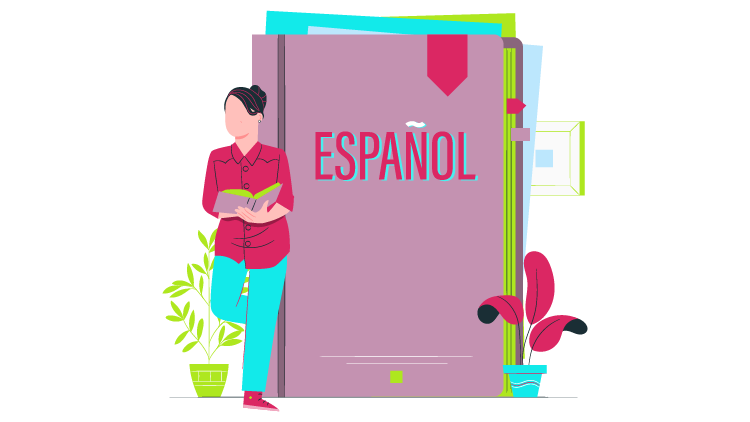
Are you looking to learn Spanish but not sure where to start? Our free Spanish language guide is here to help! In this blog post, we will provide you with essential Spanish language tips that will help you on your journey to mastering this beautiful language. Whether you’re a beginner or looking to brush up on your skills, these tips are sure to be beneficial. Let’s dive in and explore the world of Spanish language learning together!
Understanding the Basics of Spanish Grammar
Grasping the foundational elements of Spanish grammar is a pivotal step in language acquisition. Many learners might feel overwhelmed at the outset, but the complexity of Spanish grammar can be managed with structured guidance. Our free Spanish language guide simplifies these grammatical concepts into digestible pieces, enabling learners to methodically build their linguistic proficiency. It emphasizes the importance of getting acquainted with verb conjugations, a cornerstone of Spanish grammar, which significantly differs from English. Attention is also drawn to the gendered nature of nouns and the use of adjectives, which must agree in gender and number with the nouns they describe. Additionally, learners are encouraged to familiarize themselves with common grammatical structures, such as the correct usage of prepositions and the subjunctive mood, which plays a prominent role in expressing desires, doubts, and hypothetical situations. By dedicating time to these fundamental aspects, learners can establish a solid grammatical foundation, paving the way for more advanced language skills. This approach demystifies the rules of Spanish grammar, making the learning process more approachable and less intimidating.

Expanding Your Spanish Vocabulary Effectively
Expanding your vocabulary is a crucial component in mastering Spanish. Our free Spanish language guide provides several strategies designed to enhance your lexical repertoire in engaging and effective ways. One innovative method is through the creation and utilization of flashcards. This timeless technique leverages the benefits of spaced repetition, allowing learners to remember new words and phrases more efficiently. Additionally, immersing oneself in Spanish literature offers a unique opportunity to encounter words within their natural context, which can greatly aid in understanding usage and nuance.
Another recommended approach is to integrate Spanish media into your leisure activities. Watching Spanish films, television shows, and even news broadcasts can introduce learners to a wide range of vocabulary, from colloquial expressions to more formal discourse. This method not only expands your word bank but also helps in acquainting you with various dialects and accents, enriching your understanding of the language’s diversity.
Engaging with music is yet another powerful tool in vocabulary acquisition. Listening to Spanish songs and attempting to decipher the lyrics can be an enjoyable way to learn new expressions and slang. The rhythmic and repetitive nature of music makes it an excellent medium for memorization and practice.
Lastly, technology has made language learning more accessible than ever. Apps specifically designed for vocabulary building offer personalized learning experiences, adapting to your level and pace. These applications often incorporate games, quizzes, and challenges to keep the learning process fun and motivating.
By incorporating these methods into your study plan, you can effectively broaden your Spanish vocabulary and take significant strides towards fluency.
Mastering Spanish Pronunciation and Accent
Achieving a native-like accent and clear pronunciation in Spanish is a challenging yet rewarding aspect of language learning. Our free guide offers targeted advice to help you navigate this aspect of Spanish fluency. One of the key strategies is to immerse yourself in the sounds of the language. This means listening attentively to how native speakers articulate words and phrases. Try mimicking the rhythm, tone, and intonation of Spanish speakers in various contexts, such as in movies, songs, or conversations.
Engaging with native content not only exposes you to the correct pronunciation but also to the diverse accents found within the Spanish-speaking world. Paying attention to these differences can enrich your understanding and appreciation of the language’s global variations.
Additionally, practicing with specific pronunciation exercises can be incredibly beneficial. For instance, tongue twisters in Spanish can improve your articulation and help you overcome challenges with difficult sounds, such as the rolled “r” or the distinction between “v” and “b” sounds, which are often tricky for learners.
Recording yourself speaking Spanish and comparing your pronunciation to that of native speakers can also offer insights into areas for improvement. This method allows you to self-correct and adjust your accent over time.
Lastly, don’t underestimate the value of feedback from native speakers or language instructors. Constructive criticism can pinpoint specific areas where your pronunciation might need work, offering you a clearer path towards mastering a more authentic Spanish accent. Engaging in language exchange with native speakers provides a practical and interactive way to practice and refine your pronunciation skills continuously.

The Power of Immersive Learning Environments
Creating an immersive learning environment is invaluable for those aiming to elevate their Spanish language proficiency. Immersion goes beyond traditional classroom learning, offering a rich tapestry of cultural and linguistic experiences that can dramatically fast-track the acquisition process. This method is particularly effective because it compels learners to use Spanish in real-world situations, thereby reinforcing their skills and building confidence in their ability to communicate.
One avenue to achieve immersion is by engaging with local Spanish-speaking communities. This can be as simple as attending cultural festivals, dining at authentic Spanish restaurants, or participating in community events where Spanish is the primary language spoken. Each of these interactions is a learning opportunity, providing a practical context for applying language skills outside the textbook.
Additionally, technology facilitates virtual immersion experiences, connecting learners with native speakers through language exchange apps and platforms. These digital tools offer the chance to practice conversational Spanish in a safe and supportive environment, simulating the experience of being in a Spanish-speaking country without leaving your home.
Language exchanges, both in person and online, are another effective strategy. They not only improve linguistic abilities but also deepen cultural understanding, offering insights into the nuances and colloquialisms of everyday Spanish. Engaging in regular conversations with native speakers can unveil aspects of the language that are not easily gleaned from formal study alone.
Immersive environments challenge learners to adapt and think in Spanish, promoting a level of fluency that is difficult to achieve through conventional study methods alone. By actively seeking out immersive experiences, learners can significantly enhance their language skills and cultural comprehension, making the journey towards Spanish proficiency both enjoyable and rewarding.
Utilizing Technology and Free Resources
Harnessing the power of technology can revolutionize your Spanish learning experience. Our free Spanish language guide taps into the vast universe of digital tools and platforms available at your fingertips, all designed to support your language acquisition efforts. There are myriad options out there that cater to various aspects of learning Spanish, from vocabulary and grammar to listening and speaking skills.
Language learning applications such as Duolingo stand out for their user-friendly interfaces and personalized learning paths, making it easier for learners of all levels to improve their Spanish bit by bit every day. Additionally, podcasts tailored to Spanish learners offer the chance to immerse yourself in the language, whether you’re on the go or relaxing at home. These audio resources range from beginner-friendly lessons to discussions on complex topics for advanced learners, allowing you to hone your listening and comprehension skills effectively.
YouTube channels dedicated to Spanish education are another fantastic resource. Here, you can find engaging video content covering grammar lessons, pronunciation tips, cultural insights, and more. This visual and auditory approach to learning can be particularly helpful for retaining new information and applying it in real-world contexts.
Lastly, don’t overlook the value of websites and online forums where you can practice reading and writing in Spanish. These platforms provide opportunities to engage with native speakers and fellow learners, offering both feedback and encouragement. By integrating these technological resources into your study routine, you can create a diversified and comprehensive learning strategy that keeps you motivated and on track towards fluency.
Tips for Practicing Spanish Daily
Incorporating Spanish into your everyday life doesn’t have to be daunting. Simple, yet effective strategies can significantly enhance your proficiency with regular use. Start by labeling items around your home in Spanish. This visual reinforcement of vocabulary can make a big difference in retaining new words. Change the language settings on your phone or computer to Spanish. This immersion technique forces you to interact with the language in a practical context. Dedicate time each day to listen to Spanish music or podcasts during your commute or while exercising. These moments can transform passive activities into dynamic learning opportunities. Engage in at least one daily activity entirely in Spanish, whether that’s reading a news article, watching a short video, or writing a journal entry. This practice not only improves your reading and writing skills but also boosts your cultural knowledge. Lastly, make a habit of speaking Spanish daily. Even if it’s just narrating your actions throughout the day or having a brief conversation with a language exchange partner, speaking is crucial for building confidence and fluency. These daily habits, when consistently applied, can expedite your journey towards Spanish mastery.
Frequently Asked Questions
What are the key pronunciation tips for beginners in Spanish?
Our free guide emphasizes mastering the Spanish vowels, which are shorter and more consistent than in English. Key tips include pronouncing each vowel clearly and distinctly: ‘a’ as in ‘father’, ‘e’ as in ‘bed’, ‘i’ as in ‘machine’, ‘o’ as in ‘pot’, and ‘u’ as in ‘flute’. Additionally, the guide covers the importance of the rolled ‘r’, especially in words like “perro” (dog) where it distinguishes meanings.
How can learners effectively expand their Spanish vocabulary using the guide?
The guide suggests using flashcards and language apps to regularly practice and reinforce new words. It also recommends immersing oneself in the language through Spanish media, such as newspapers, films, and music, which not only builds vocabulary but also helps in understanding cultural contexts.
What grammar essentials does the guide cover for Spanish learners?
The guide covers fundamental grammar points like the use of gendered nouns, the conjugation of regular and irregular verbs, and the proper use of tenses. It highlights common pitfalls, such as the misuse of ser and estar (both meaning “to be”), and provides clear examples to illustrate these rules.
Are there specific conversational phrases highlighted in the guide?
Yes, the guide includes a list of common conversational phrases and questions that are essential for daily interactions, such as greetings, ordering food, asking for directions, and expressing needs or preferences. This helps learners to not only practice their pronunciation but also gain confidence in everyday communication.
What tips does the guide provide for achieving fluency in Spanish?
To achieve fluency, the guide recommends consistent practice and exposure to the language. It encourages engaging with native speakers through language exchange programs or online forums. Additionally, it advises learners to set realistic goals, such as focusing on one aspect of the language at a time, and to be patient and persistent with their learning journey.

